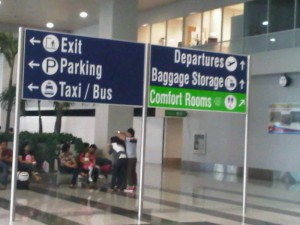Piatco’s quest for ‘just’ compensation
MANILA, Philippines—On May 23, 2011, a Pasay City regional trial court ordered the government to pay $175.79 million (or about P7.6 billion) as “just compensation” to the Philippine International Air Terminals Co. Inc. (Piatco), the consortium that built the controversial Ninoy Aquino International Airport (Naia) Terminal 3.
Judge Eugenio de la Cruz also allowed the government’s motion seeking to deduct the more than P3 billion that it had paid to Piatco in down payment.
Court battles have been going on between the government on one hand and Piatco and its German-based partner Fraport on the other, since the contract to build Naia 3 was canceled by former President Gloria Macapagal-Arroyo.
In 2002, Arroyo voided Piatco’s contract on the ground that certain provisions were illegally renegotiated in 1998 by ousted President and convicted plunderer Joseph Estrada (who is now mayor of Manila) to the disadvantage of the government. The Supreme Court upheld the Arroyo government and nullified the Piatco contract in 2003.
On Dec. 21, 2004, the Office of the Solicitor General filed with the Pasay regional trial court a case to expropriate Naia 3 so it could get the airport working at the soonest time possible. The Pasay court issued a writ of possession to the government, but ordered it to pay Piatco
P3 billion ($53.57 million) as a down payment on the compensation still to be determined.
Fraport accused the government of breaking the law and dismissed the offer of down payment as insufficient. Fraport and its Chinese Filipino partners demanded $846 million in compensation. The government said it was prepared to pay Piatco $149 million.
Fraport brought its case for compensation to the World Bank while Piatco sought a separate arbitration with the Singapore-based International Chamber of Commerce (ICC) tribunal.
On Aug. 23, 2006, the ICC ordered the government to return the facility to Piatco until a valid writ of possession was issued by a Philippine court. It said the writ released by the Pasay court in 2004 could only be considered valid if there was proof that the P3-billion down payment had been paid.
The next month, Piatco received the P3 billion from the government, paving the way for the Manila International Airport Authority to work on the facility for its opening.
On July 22, 2010, the ICC rejected Piatco’s claim but Piatco asked the High Court of Singapore to reverse the ruling of the ICC tribunal. Its petition was denied by the Singapore’s High Court on Nov. 15, 2011.
Meanwhile, the World Bank’s International Center for Settlement of Investment Disputes (ICSID) on Aug. 17, 2007 decided it lacked the jurisdiction to hear Fraport’s claim and dismissed the German company’s claim for compensation.
However, the ICSID, in a Dec. 23, 2010, decision reinstated the right of Fraport to file an arbitration or compensation case against the Philippine government.
Explaining the ICSID ruling, Solicitor General Anselmo Cadiz said the decision by an ICSID ad hoc committee merely provided Fraport a chance to file a new arbitration case and present its claim against the Philippine government again and the latter to present its evidence against the German company again.
Naia 3, which was originally scheduled to open late in 2002, finally started partial operations and accepted its first passengers on July 22, 2008.
In keeping with the 1990 Naia master plan study, Terminal 3 was to replace the existing Naia Terminal 1. When operational, it should accommodate all international traffic. However, Naia 3 has been operating at only about half of its total capacity of 13 million passengers a year since it opened.—Inquirer Research
Sources: Inquirer Archives, osg.gov.ph
RELATED STORY
